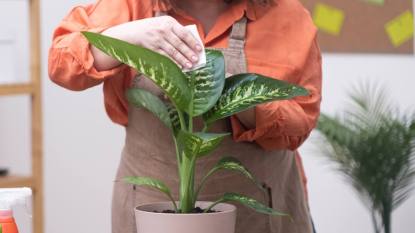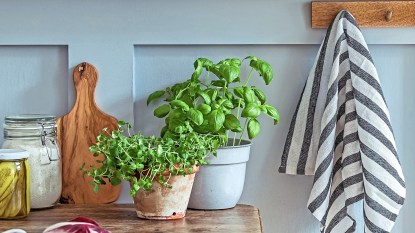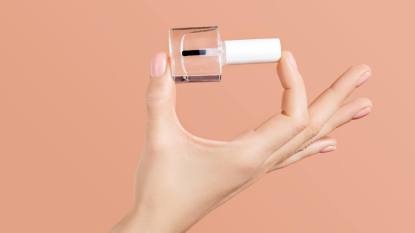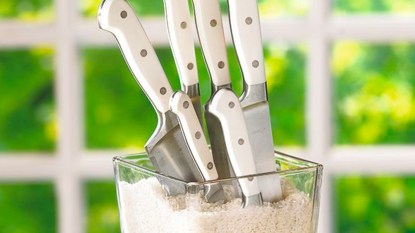Move Over, Magic Eraser: Cleaning Pros Reveal 11 Ways a Pumice Stone Works Better
Discover how this $4 wonder can remove stuck-on gunk from oven grates, grout, toilet bowls and more
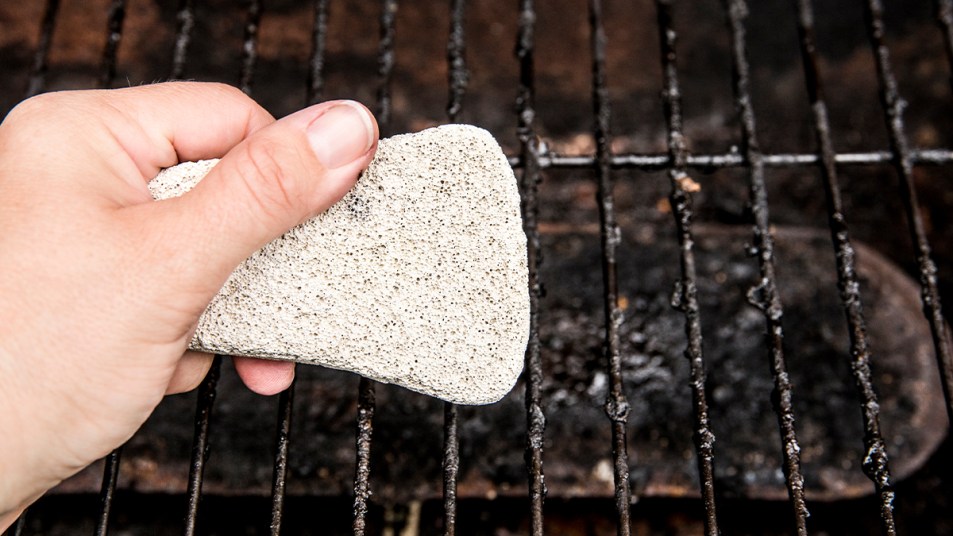
You’ve likely used a pumice stone to slough off calluses, exfoliate dry skin and soften elbows, but you may not know that the low-cost tool is capable of doing so much more. The lightweight and abrasive result of quickly cooling lava, pumice stones are the workhorse of the household. They’re versatile and low-cost, able to be used as everything from a sweater comb to a hard water remover. The real question is, what can’t they do? There’s a hack for nearly every area of your home. Simply put, you’ll never forget to grab a pumice stone for cleaning ever again.
Why is a pumice stone so good at cleaning?
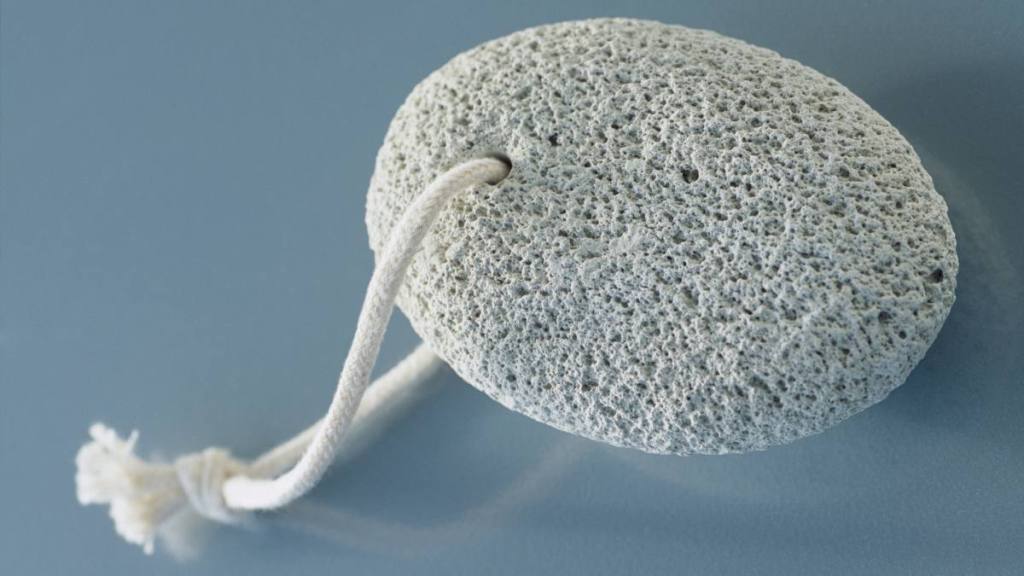
We use pumice stones for cleaning because “the gritty texture helps score, scrape and sand away at hard, thick buildup,” says Katie Pritchard, cleaning tech at Homemaid Cleaning Service. That said, it’s also soft enough to not damage certain surfaces — as long as it’s used correctly.
Beth Zanelli, Inventory Manager at Tranquil Home, an eco-friendly cleaning service in San Diego, also appreciates how they’re “naturally abrasive, non-toxic, easy to handle and able to be used several times.”
Don’t have one handy? They make pumice stones with handles, especially for cleaning! One to try: Pumice Stone Cleaning with Handle (Buy from Amazon, $6.99 for a 2 pack)
Do you use a pumice stone wet or dry?
When cleaning, pumice stones should always be wet, soaking for a few minutes before you put them to work. “When they’re dry, they’re more abrasive and likely to scratch,” Zanelli explains. “When the pumice is wet, it reduces the friction between the surface and the stone.”
Pritchard agrees with this, recommending that you also “wet the surface and regularly re-wet both as you go.” Make sure to also not scrub too hard—light pressure is all you need.
What can you clean with a pumice stone?
“Pumice stone is used to clean stubborn stains that need rough agitation, similar to sandpaper except more gentle,” explains Pritchard. This includes a range of surfaces prone to rust, mineral deposits, hard water, soap scum and mildew. Here, 11 ways to use a pumice stone for cleaning.
1. Pumice stone for cleaning sinks
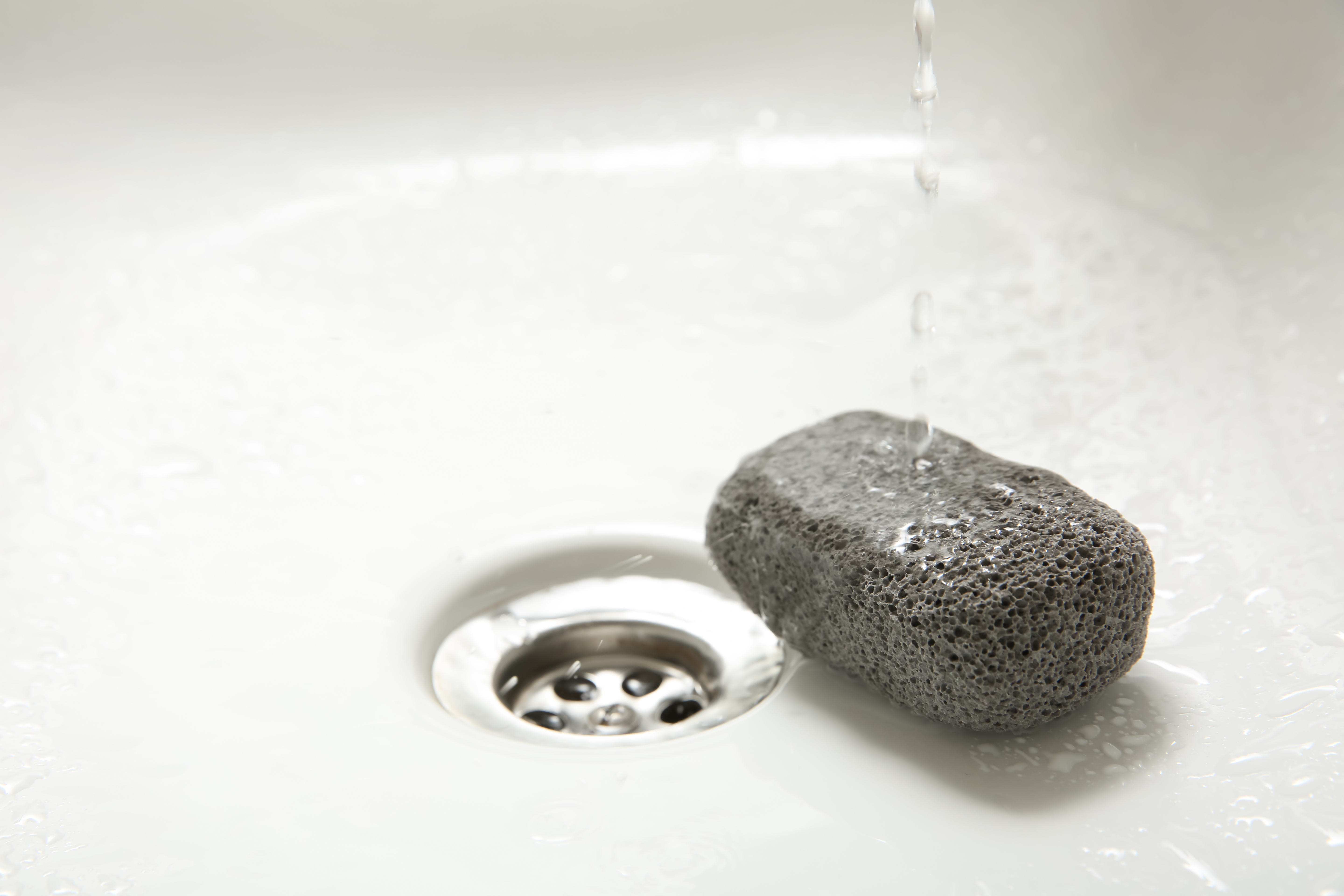
You may not think porcelain can take the roughness of pumice, but if you’re using the stone the right way, it definitely can. An especially good option if you don’t want to use chemicals, says our experts. It can also repair scratches.
2. To clean grout
Is your grout so dirty, it’s actually an entirely different color than what you see? Enlist a pumice stone, says Pritchard. As you’re scrubbing, regularly wipe away debris with a damp cloth or sponge so it doesn’t make its way back into the grout.
3. Pumice stone for cleaning ovens
Sure, oven cleaner is effective, but oven cleaner with a pumice stone is even more effective (you can also use it without). The baked-on food and grease you’ve been dreading trying to get rid of don’t stand a chance against one, says Zanelli. Watch this YouTube to see how well. pumice stone and dish soap clean an oven!
Related: 10 Brilliant (And Surprising) Uses for Dish Soap
4. To clean pet hair
Treat the pumice stone as you would a brush, using short strokes on the upholstery to push the pet hair out of its fibers, says Pritchard. Then use a vacuum or lint roller to clean up the hair after.
5. Pumice stone for cleaning pools
A pumice stone is surprisingly helpful at cleaning your pool (unless it’s fiberglass or vinyl, because they scratch). It can scrub away all the hard water, mineral deposits, rust, mildew, and the protective layer of black algae so your pool chemicals can go in and destroy it.
6. To clean rusty tools and hardware
When we mentioned “surfaces prone to rust,” we were talking about tools too. (Of course, just be careful not to hurt yourself.) The gritty texture just scapes it right off, says Pritchard. Watch this video to see how well it cleans rust off a shower faucet:
7. Pumice stone for cleaning pilled fabric
It can be disappointing to discover pilling on your favorite sweater, but there is a solution: pumice stone. Gently brush the fabric in one direction to remove it, then pick up the removed lint with a lint roller.
8. To clean toilet bowls
That yellow ring of hard water in your toilet? Using a pumice stone for cleaning can take care of the stain in a way no toilet bowl cleaner can.
This TikTok by @inocleaning shows how a pumice stone cleans a toilet:
9. Pumice stone for cleaning grates
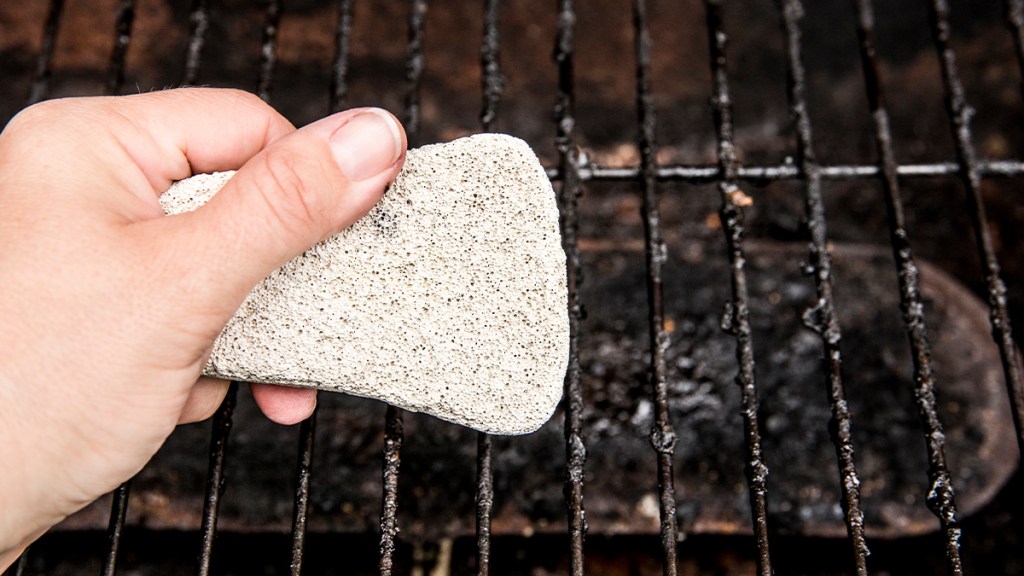
Not a single oven or grill grate in the world is safe from the perils of burnt-on food — but the good news is, a pumice stone can save them all, says Zanelli. After all the gunk is loosened up, spray a mixture of two cups of water and one tablespoon of dish soap all over, letting it soak for five minutes. That, combined with a scrub pad, should help remove stubborn grease and grime.
10. To clean cookware
Notice that we didn’t say all cookware and bakeware. A pumice stone is safe to use on ceramic pots and pans and glass bakeware — used with dish soap, or even just water, it scours away cake on grease, burns and food particles, says Pritchard. But, avoid using on non-stick cookware, it can scratch and damage the material..
11. Pumice stone for cleaning tiles
If your ceramic tile is susceptible to issues like hard water, mold or mildew, treat it like you would anything else on this list: start scrubbing — just not too hard. See here how well it works:
Related: The $2 Toilet Bowl Cleaner To Use on Mold
Where should you *not* use a pumice stone?
Zanelli advises to avoid using pumice on glass, the interior of non-stick cookware, acrylic and wood. Soft stone, paint, plastic and other soft surfaces are also off-limits, advises Pritchard. And if you’re not sure if using a pumice stone for cleaning is okay on something? “Until you’re familiar with whether or not pumice is safe for a surface, always test in an inconspicuous location before broad, exposed ones,” she recommends.
How do you clean a pumice stone?
There are two schools of thought about cleaning a pumice stone, one being a little bit more low-maintenance than the other.
Pumice stones slowly break up as they’re used, Pritchard says, which is exactly what allows them to scrape away buildup without causing damage. “That said, you may need to rinse as you go if you have a really thick stain,” she explains. “You can do this by holding it under running water briefly or dipping it in a cup of water and stirring to release the debris caught in the crevices, rendering the pumice more effective.”
Zanelli, on the other hand, takes a more hands-on approach, rinsing it off immediately after use. “Next, you want to fill a bowl with warm, soapy water and let the pumice stone soak in there for 10-15 minutes,” she says. “You can then rinse it again, and if you need further sanitation, you can soak the pumice in vinegar and water for a few minutes to clean any leftover bacteria or germs.” After that, just let the stone air dry and you’re done.
This video shows an easy pumice-stone cleaning hack using a toothbrush:
For more surprising cleaning hacks , click through the links below!
Apple Cider Vinegar For Laundry? Yes! It Makes Clothes Look, Smell + Feel Brand New
How To Clean a Wooden Cutting Board + the Salt Trick That Wipes Out Stubborn Stains
The Best Way To Clean a Stainless Steel Sink? Plain Old Flour, Says Cleaning Pro


